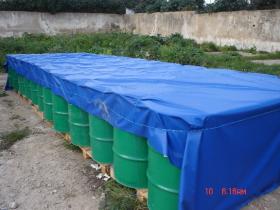 The United Nations announced a plan on Wednesday that aims to finally rid the world of DDT, a toxic pesticide still used to spray homes against malaria-spreading mosquitoes.
The United Nations announced a plan on Wednesday that aims to finally rid the world of DDT, a toxic pesticide still used to spray homes against malaria-spreading mosquitoes.
Ten projects involving some 40 countries in Africa, the Eastern Mediterranean and Central Asia, are set to test non-chemical methods of eradicating the deadly disease without DDT, based on successful pilot projects in Mexico and Central America that successfully cut malaria rates.
Organic solutions range from eliminating potential mosquito breeding sites to securing homes with mesh screens, and deploying mosquito-repellent trees or fish that eat mosquito larvae.
The new projects follow a successful five-year pilot program using alternatives to DDT in Mexico and Central America, where pesticide-free techniques and management procedures have helped cut cases of malaria by over 60 percent.
The UN Environment Programme and the World Health Organization are spearheading the new projects, with nearly $40 million in funding from the Global Environment Facility.
The agencies aim to cut DDT use by 30 percent worldwide by 2014 and phase out the use of the pesticide completely by the early 2020s while staying on track with WHO malaria eradication targets.
“The new projects underline the determination of the international community to combat malaria while realizing a low, indeed zero, DDT world,” said UNEP Executive Director Achim Steiner. “Today we are calling time on a chemical rooted in the scientific knowledge and simplistic options of a previous age.”
However, concern over DDT is matched by concern over the close to 250 million malaria infections a year which result in over 880,000 deaths.
WHO Director-General Margaret Chan noted that the agency “faces a double challenge, a commitment to the goal of drastically and sustainably reducing the burden of vector-borne diseases, in particular malaria, and at the same time a commitment to the goal of reducing reliance on DDT in disease vector control.”



















